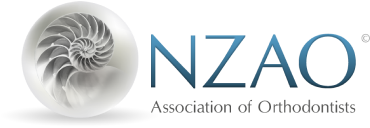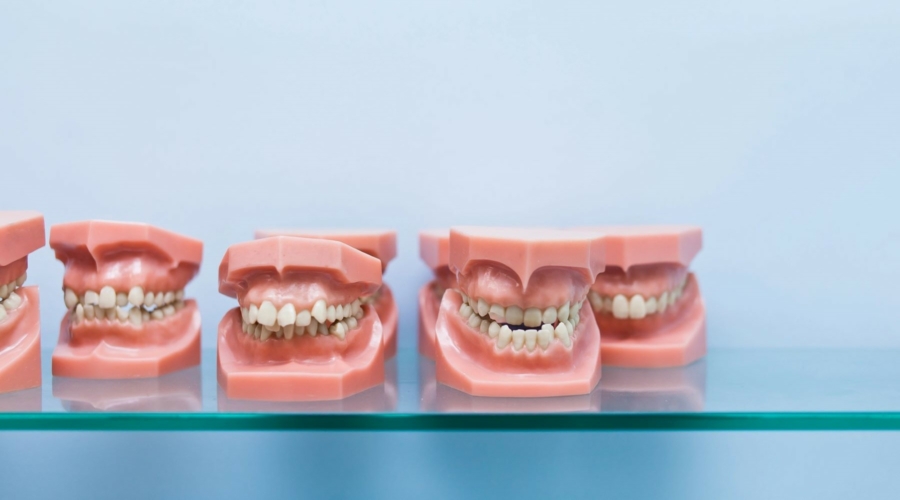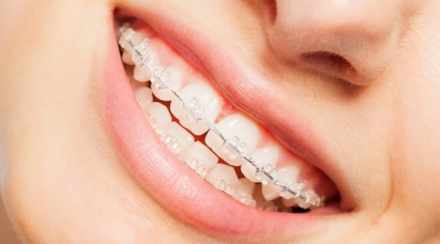Have you ever wondered why your teeth don’t quite line up perfectly? You’re not alone. Overbite, underbite, and crossbite are common dental issues that affect millions of people worldwide.
These conditions, collectively known as malocclusion (read more here), can impact your smile, speech, your dental health and even your overall oral health. Understanding these bite problems is the first step towards achieving a healthier, more confident smile.
Understanding Malocclusion
Malocclusion, or “bad bite”, is a common dental problem that occurs when your upper and lower teeth don’t align properly when you close your mouth. This misalignment can happen in several ways, often due to crowded or crooked teeth, or when your upper and lower jaws don’t match up correctly.
Causes of Malocclusion
Several factors can contribute to malocclusion. Here’s a list of some more common causes:
- Genetics: Inherited characteristics, such as tooth size, missing teeth and jaw shape, can influence malocclusion.
- Environmental factors: Habits like thumb sucking or prolonged pacifier use can affect tooth alignment.
- Size mismatch: When your jaw size is too small for your teeth, it can cause crowding and misalignment.
- Lost teeth: Gaps from lost teeth can cause nearby teeth to shift, leading to misalignment.
- Injuries or trauma to the jaws and teeth
- Birth defects: Conditions like cleft palate can affect jaw development.
Symptoms of Malocclusion
The symptoms of malocclusion can vary depending on the type and severity. Common signs include:
- Visibly misaligned, crooked and crowded teeth
- Teeth that stick out
- Difficulty or discomfort when biting or chewing
- Inability to bite into food correctly
- Changes in facial structure
- Biting of cheeks or tongue
- Speech difficulties (in rare cases).
Overbite: Causes and Treatment

What is an Overbite?
An overbite is a common dental issue that occurs when your upper front teeth overlap your lower front teeth too much. While a slight overlap of 10% to 20% is considered normal, an overbite can become problematic when the overlap exceeds 20%.
It’s important to note that an overbite differs from an overjet. An overbite involves vertical overlap, where the upper teeth close over the bottom teeth. In contrast, an overjet occurs when the front top teeth protrude forward at an angle over the bottom teeth – see below.

Common Causes
Several factors can contribute to the development of an overbite:
- Genetics: The shape and size of your jaws and teeth are often inherited traits, making overbites more likely if they run in your family.
- Jaw size mismatch: When your lower jaw is smaller compared to your upper jaw, it can result in an overbite.
- Lost teeth: Gaps from missing teeth can cause nearby teeth to shift, leading to misalignment and an increase in overbite.
Treatment Options
The treatment for an overbite varies depending on its severity and the age of the patient. Here are some common approaches:
Orthodontic treatments:
- Braces or removable aligners: Traditional metal or ceramic braces or clear aligners like Invisalign can help correct mild to moderate overbites by gradually shifting teeth into proper alignment.
- Functional appliances: These devices use pressure from the tonque, lips and cheeks to align the upper and lower jaw, often used in combination with braces or aligners.
- Tooth extraction: In some cases removing teeth may be necessary to create space for the remaining teeth to align correctly.
- Surgery: For severe overbite cases, especially in adults, orthognathic surgery might be required to reposition the jaws when other orthodontic treatments aren’t sufficient. Your orthodontist will work together with an Oral and Maxillofacial Surgeon in these cases.
- Retainers: After treatment, retainers are used to maintain the new position of your teeth.
It is easier to treat an increased overbite in a young and growing patient. The treatment options can be limited in an adult who has completed their growth. Left untreated an increased overbite can result in wear of the anterior teeth more than what would normally occur, and damage to the gums supporting the teeth which in some cases can be very significant. An untreated overbite might cause you to feel self-conscious about your smile, potentially impacting your overall well-being.
To determine the best treatment plan for your overbite, it’s essential to consult with a specialist orthodontist. They will assess the severity of your condition and recommend the most suitable approach to help you achieve a healthier, more aligned smile.
Underbite: Causes and Treatment

What is an Underbite?
An underbite is characterised by lower teeth that extend outward farther than the upper front teeth. Also known as a Class III malocclusion, prognathism, or reverse bite, an underbite occurs when your lower teeth and jaw protrudes beyond your upper teeth and jaw. This misalignment can range from mild cases where the lower teeth slightly overlap the upper teeth to severe cases where the lower jaw visibly juts forward.
In a properly aligned bite, your upper front teeth should extend slightly beyond your lower front teeth. This positioning allows all your teeth to meet and function when you close your mouth.
Common Causes
Several factors can contribute to the development of an underbite:
- Genetics: The most common cause of underbites is hereditary. The shape and size of your jaws and teeth are largely determined by your DNA. If someone in your family has an underbite, you’re more likely to develop one as well.
- Injuries: Severe injuries to the face can cause permanent damage to the jawbones. Even after surgical repair, jaws may not fit together properly, resulting in an underbite.
- Cleft lip or palate: These birth defects can sometimes result in malocclusion, including underbites.
Treatment Options
The treatment for an underbite depends on its severity and the age of the patient. Here are some common approaches:
Orthodontic treatments:
- Braces and removable aligners: Traditional metal or ceramic braces or clear aligners can help correct underbites by gradually shifting teeth into proper alignment.
- Upper removable appliance: This device is fitted to the roof of the mouth and upper teeth and gradually moves the upper teeth and jaw to better match the lower teeth and jaw.
- Tooth extraction: Removing one or more teeth may help create space to correct the bite, especially if overcrowding is present.
- Reverse-pull face mask: This appliance, also known as headgear, is designed for young growing patients. It is designed to pull the upper jaw and teeth forwards into the correct position and is very occasionaly used to help with the correction of underbites.
Surgery:
- For severe cases, especially in adults, orthognathic or jaw surgery might be necessary to allow correction of an underbite. Your orthodontist will work together with an Oral and Maxillofacial Surgeon in these cases.
Retainers:
- After treatment, retainers are used to maintain the new position of your teeth and jaws.
To determine the best treatment plan for your underbite, it’s essential to consult with a specialist orthodontist who can assess the severity of your condition and recommend the most suitable approach to achieve the best balance possible for your teeth and jaws. Leaving an underbite untreated can lead to various complications. These may include difficulty biting and chewing food, speech problems, uneven and excessive wear of the front teeth.
Crossbite: Causes and Treatment

A crossbite is a dental condition that occurs when the upper teeth and lower teeth do not align correctly when the mouth is closed. This misalignment can manifest in two ways: anterior crossbite, which affects the front teeth, and posterior crossbite, which affects the back teeth. When left untreated, crossbite can lead to various issues, including uneven wear on the teeth, discomfort in the jaw, and difficulties with chewing.
To address this condition, there are several treatment options available which aim to correct the alignment of the teeth and improve overall oral health. By opting for these treatments, individuals can achieve a proper bite alignment, ensuring that their teeth function optimally and reducing the risk of further complications.
Types of Crossbite
There are several types of crossbites, each with unique characteristics:
- Anterior Crossbite: This occurs when your upper front teeth sit behind your lower front teeth during biting. It’s often referred to as an “underbite” and is considered the most common type of crossbite.
- Posterior Crossbite: In this type, your upper back teeth, on one (unilateral) or both (bilateral) sides of your mouth, bite on the inside of your lower teeth. This misalignment can affect facial symmetry. Unilateral crossbite can lead to functional issues and potentially contributing to uneven wear on the effected side. Bilateral crossbite can pose challenges in chewing and may require more extensive orthodontic treatment to correct.
- Scissor bite: A type of posterior crossbite where the upper back teeth on one or both sides of the mouth bite on the outside of your lower teeth.
Common Causes
Understanding the causes of crossbites is fundamental to developing effective treatment strategies.
- Genetic Factors: Inherited jaw structure and tooth positioning, maxillary hypoplasia (small upper jaw), mandibular hyperplasia (large lower jaw)
- Overcrowded, abnormally shaped or extra teeth
- Ectopically erupting teeth (teeth erupting in the wrong position) and delayed loss of baby teeth.
- Prolonged thumb-sucking, pacifier use, or bottle use in childhood
- Tongue thrusting and swallowing problems
- Missing teeth or jaw fracture resulting from accidents or injuries
- Cleft lip or cleft palate
- Abnormal jaw growth
It’s important to note that crossbites can result from a combination of these factors. Early identification and intervention are crucial for preventing more severe dental issues in the future. If you suspect you or your child might have a crossbite, it’s advisable to consult a specialist orthodontist for a proper diagnosis and treatment plan.
Treatment Options
The treatment options for crossbite depend on several factors, including the severity of the condition and the age of the patient. A comprehensive evaluation by an orthodontist is necessary to determine the most suitable treatment plan for each individual.
Here are some common treatment options for crossbite:
Orthodontic treatments:
- Braces and removable aligners: Traditional metal or ceramic braces or clear aligners like Invisalign can help correct mild to moderate crossbites by gradually shifting the misaligned teeth into their proper positions.
- Palatal Expanders: Palatal expanders are often used in children and adolescents with crossbite. This orthodontic appliance is designed to widen the upper jaw, allowing the upper and lower teeth to bite correctly.
- Tooth extraction: In certain cases, tooth extraction may be necessary to address crossbite issues. By removing specific teeth, orthodontists can create the necessary space for proper alignment. Tooth extraction is typically considered when other treatment options are insufficient to achieve the desired results.
- Surgery: In severe and complex cases of crossbite, especially in adults, surgical intervention may be required. Orthognathic surgery, also known as corrective jaw surgery, can realign the jaw and correct the underlying skeletal discrepancies. This surgical option aims to achieve optimal functional and aesthetic outcomes for patients with severe crossbite.Your orthodontist will work together with an Oral and Maxillofacial Surgeon in these cases.
- Retainers: After treatment, retainers are used to maintain the new position of your teeth. After completing orthodontic treatment with braces or aligners, retainers play a crucial role in maintaining the new position of the teeth. Retainers are custom-made appliances that help prevent relapse and ensure long-term stability. Regular use of retainers as prescribed by the orthodontist is essential to preserve the treatment outcomes.
It is important to emphasise that consulting with a specialist orthodontist is crucial when dealing with crossbite. They possess the training, knowledge and experience to evaluate the specific condition and recommend the most suitable treatment plan.
Each case is unique, and a personalised approach is necessary to achieve optimal results and ensure long-term oral health and functionality. By seeking timely and appropriate treatment, individuals with crossbite can improve their bite, enhance their smile, and enjoy a healthier and more confident life.
Unlock the Smile You Deserve with Expert Care
Dental misalignments like overbite, underbite, and crossbite are common issues that can have a significant impact on oral health and overall well-being. These conditions, stemming from a mix of genetic and environmental factors, often require professional intervention to address effectively.
Addressing malocclusion is not just about aesthetics; it’s about improving oral function and preventing potential complications down the road. Your specialist orthodontist can help you with a solution to suit your type of malocclusion and your needs.
By seeking professional advice and exploring these options, individuals can work towards not only enhancing their smile but also boosting their overall oral health and confidence.
ALSO READ: What Is Orthotropics? Is It A Safe Alternative? NZAO Statement Of Position




